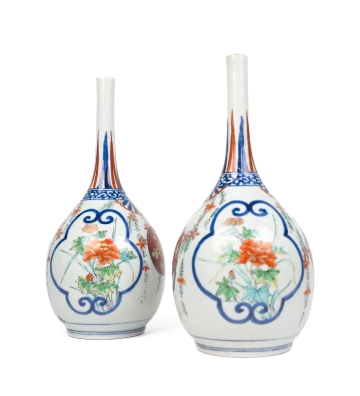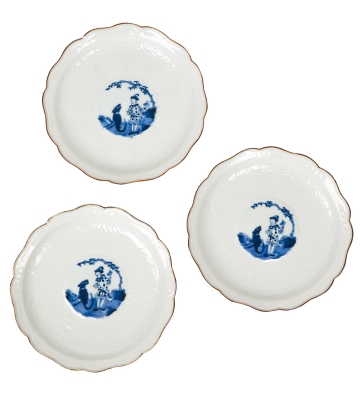Each vase has a pear form with tall narrow neck, decorated in the 'Kenjo-style' in iron red, green, yellow, aubergine and black enamels. On the underglaze blue there can also be found gilt. The bottles have two cartouches (panels of flowering plants) with peonies. The panels are divided by two red circular reserves with a spray of chrysanthemum, each against a weeping cherry tree below a half chrysanthemum flowerhead. The neck of the bottles begin with a band of 'karakusa' pattern and is followed by a band of elongated triangles above. The foot has three circumferential lines.
The difference between normal 'Imari' and 'Kenjo Imari' porcelain lies in their specific styles. Imari refers broadly to the porcelain produced in Imari, Japan, often only in underglaze blue and overglaze red with gold. In contrast, Kenjo Imari (or Kakiemon) is a more refined style known for its delicate, detailed designs and a lighter color palette, often emphasizing natural motifs.
Condition: No cracks or repairs, one backing error to the bottom of one vase and one small surface chip on the belly.
Reference:
-A similar example can be found in Musée de la Compagnie des Indes Citadelle.
-See: Christies 19 December 2014, Online Auction 5932 'Japanese Art at the English court', lot nr. 58.



















